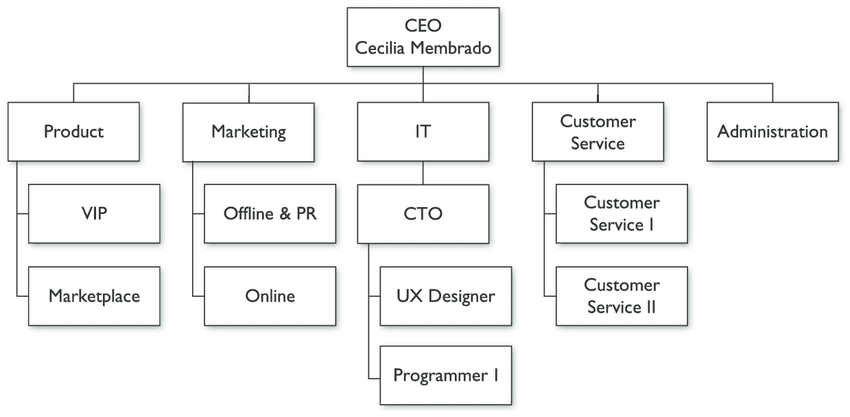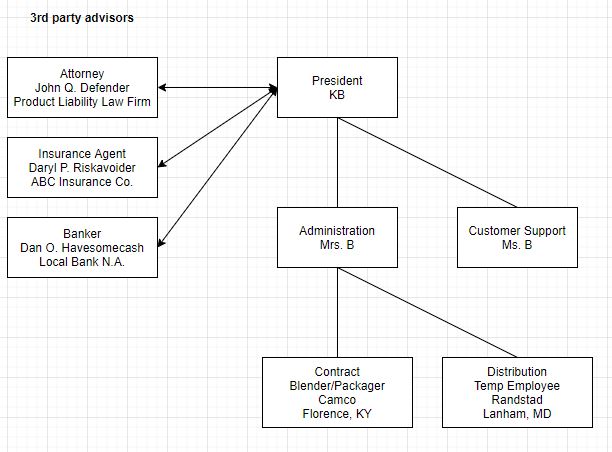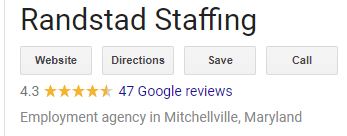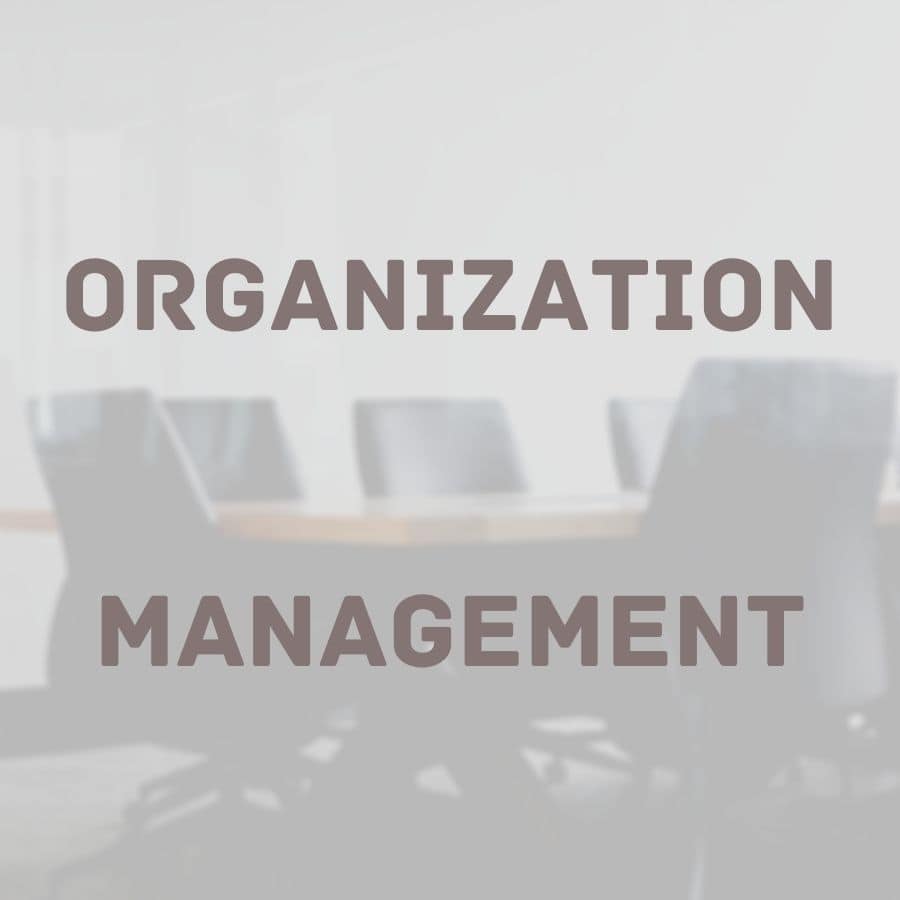
How do you write the organization and management section of your business plan?
- Remember that the purpose of a business plan is to sell people on your potential for success!
- Determine the legal structure of your business
- Develop a rough organizational flowchart. Keep in mind that owners/shareholders, directors, and third parties can also be included
- For every individual in your organizational flowchart – specify their name and responsibilities. Most importantly – highlight their qualifications for the role!
- Include official resumes and critical procedures in the appendix
- Circle back and make adjustments to the previous steps as you progress in the writing of your business plan
The organization and management part of your business plan focuses less on the business itself and more on the people behind it. A business is only as good as the people making decisions. Until (if ever), artificial intelligence can run businesses, it’s going to be people pulling the strings behind the curtain. For better or worse.
Also, keep in mind that banks lend money to people, not ideas. Venture capitalists invest in people, not mindless assets. Your business plan might be great. But, it will require one or more humans to execute that plan.
Whoever might be investing in your company will want to know the chain of command. A formal declaration of who employees report to and who the final decision maker is. If these sorts of things aren’t clarified, it can lead to catastrophe.
There are, essentially, two main parts to the organization and management section of the business plan. You’ve probably guessed what they are.
In one part you’ll discuss the business’ organizational structure. For example who will report to who, and what the chain of command looks like.
In the other part, you’ll describe the individuals who will populate those positions. Plus, their qualifications for doing so.
The organization of your business
The reader of your business plan will want to know what the organizational structure is when you are starting your business. They need to know who the key people are in the organization and what their roles will be.
Businesses need smooth running chains of command in order to be successful. And, while your business can consist of one person – there’s a good chance that at some point you’ll need quality people to help you out.
Who’s responsible for what?
Obviously, this will change over time, as your business evolves. The reader of your business plan will want to know the lay of the land when the business launches, however.
Particularly, if you’re asking for money to add additional roles in the future, you’ll want to be crystal clear about who those individuals will report to, what their responsibilities will be, and most importantly, how they’ll add value to the organization.
Generally speaking, small businesses are simpler organizations than larger ones. But, there still needs to be clarity in terms of the flow of work. Some of the critical departments to think about are sales/marketing, manufacturing/distribution, and accounting/administration. Depending on the nature of your business, research and development might be critical too. Who will be responsible for these important tasks?
Don’t be afraid to use graphics here. An illustration of the hierarchy of your business and/or the process flow can help clarify everything you’ve written about. This organizational chart can and should be used in the future – for clarification’s sake, as the business grows.

A free tool like draw.io can be used to make a good looking flowchart.
Procedures?
Beyond the organizational structure and the workflow, you might consider adding some procedures for the routine duties that these roles will handle. In fact, as you write the organization and management section of the business plan, it might dawn on you that you’ve given precious little thought to how day-to-day business will be conducted! This is the perfect opportunity to conceptualize exactly how you’ll take inputs and turn them into outputs.
Procedures demonstrate to the reader that you’ve given thought to the most efficient way to handle these tasks. They also show that you won’t be planning on wasting money on excess manpower. A business without proper procedures is one that’s going to run into trouble with inefficiency and poor customer service.
Since written procedures are detailed documents, it might best to include them in the appendix.
Third parties?
Include any roles that might be filled by third parties. Independent contractors or freelancers, for instance. Even if you anticipate relying upon consultants – that should be addressed in this section as well. Where will these people fit in the organizational chart?
If your business is going to depend on these types of individuals, the reader of your business plan wants to know about it.
More about the third parties you might consider, below.
Legal structure
Finally, the organizational section of your business plan should address the legal structure of the business. Anybody investing in your business is going to want to know whether you’re incorporated as a C or an S corporation. Or, conversely, organized as a general or limited partnership. Maybe the best legal structure for you is something as simple as in LLC or a sole proprietorship. Whatever the case may be, it’s important to convey this information.
In a corporation, the shareholders may or may not be part of the Board of Directors or the management team.
In a partnership, the assumption is that the partners will all have equal control in managing the new business.
With an LLC it can be a situation where the business is managed by the members. Or, it could be that outside managers are hired.
You can see how these sorts of things must be clarified for the reader of your business plan.
The management of your business
If you are the owner of a business, then you will list yourself. If any owners are going to be on the Board of Directors, involved with the business heavily, or on the management team you need to include a “Resume” of their skills and qualifications.
The previous section outlined the roles necessary for your startup to succeed. Now, you want to discuss the people that will fill those roles.
Whatever your role may be, the reader of your business plan will probably understand why you hired yourself. That’s one of the privileges of being a founder.
However, that doesn’t mean that you don’t have to justify why you gave yourself a particular position.
What qualifies you for this role? Hopefully, the fact that your business plan is well-polished helps to convey your qualifications. But, just because you’re a founder doesn’t mean that you can do anything. For instance, if your company will rely heavily on scientific or engineering know-how, then you had better be well-qualified if you wish to fill one of those roles.
Formalized resumes for yourself and the rest of your team can be included in the appendix. However, some of the things that you want to highlight here are:
- Name
- Their title
- Their responsibilities within the organization
- What decision will they be making?
- Their qualifications
- Previous positions that they’ve held
- Leadership experience
- Industry experience
- Sales and marketing expertise
- Anything else that will inspire confidence in your company!
Here’s an idea of the individual parties you need to name/address:
Ownership/Shareholders
The number of individuals and depth of information included here will depend, in part, on the legal structure of your business.
If it’s a corporation, you’ll list the shareholders along with the type of stock they’ll own (common or preferred).
If the business is a partnership, your list the partners along with the type of partner they are (general or limited).
For an LLC, you’ll list the members.
And, as you might expect, if your business as a sole proprietorship you will list yourself.
Additionally, if any of the owners are going to be on the Board of Directors, involved with the business heavily, or on the management team you need to include a “resume” of the skills and qualifications they bring to the table.
Board of directors
Not every small business will have a Board of Directors. If your legal structure will be an S or C corporation though, it will be required. Make sure you’re familiar with the laws of the state you live in and the state in which you incorporate in.
If you have a Board of Directors then you want to specify each of the individuals that will comprise the board. As with everyone else you would summarize the skills and qualifications that they’ll bring to the table. Resumes can, again, go in the appendix.
Furthermore, you might detail any other involvement they’ll have with your startup. That is, beyond, attending board meetings.
If your business legal structure is a partnership, LLC, or sole proprietorship you will not have a Board of Directors. It may be, however, that you have a group of trusted advisors who have expressed their willingness to help your startup succeed. If that’s the case, consider naming them here. Or, you can include them with the other third parties below. It’s up to you.
Again, these sorts of things help to sell the potential for the success of your burgeoning business.
Management
I’m sure you know the routine by now. List the names, skills, and qualifications of the upper management team.
Since these are the people that will be making the day-to-day operational decisions in your business, you want to make their accomplishments a focal point. Lenders and investors will be especially interested in how these people can earn them a healthy ROI.
Another thing to consider is that since you’ll likely be the top dog at your start up (and rightfully so) you want to emphasize how the rest of the management staff will compliment you as a manager. Particularly, how their strengths will compensate for your shortcomings. And, how your strengths will compensate for their shortcomings.
Admitting your shortcomings is not always an easy pill to swallow for an entrepreneur. We like to think that we can do it all. Again, keep in mind this is a sales document. Put your ego aside and write a management and organization section of your business plan that will get funding.
Lastly, it is here that you will specify the details of compensation for yourself and the rest of the management team. Compensation includes, of course, things such as salary, benefits, and profit-sharing.
Additionally, if any individuals will be bound by contracts or non-compete agreements, this is the place to itemize those particulars.
Other support roles
- Accountant
- Attorney
- Insurance agent
- Banker
- Mentor
In addition to the key ownership, directors, and management, you should consider outlining key third-party professionals who will serve in advisory roles. Remember, the whole point of the organization and management section of your business plan is to highlight the individuals who have your back and how they can help your business succeed. Not every key individual is going to be inside the company either.
Your accountant
Accounting is not most people’s strong suit. If that’s the case with you, then a competent professional accountant will be an extremely valuable asset. This individual will help you with business compliance, taxes, and financial operations. Also with financial statement preparation, auditing, and payroll.
All critical tasks.
Your attorney
An attorney is also a crucial part of your advisory team. They can help you choose the appropriate legal structure for your business (with help from your accountant). They provide valuable support with any contracts, intellectual property, regulation, compliance, and governance.
The law is complex and “winging it” in these areas could stop your business in its tracks.
An insurance agent or risk management advisor
Some businesses will rely more upon this than others. However, keep in mind that many of the risks your business will run into what is called “unknown unknowns” (circumstances that you could not foresee).
Having someone in your corner that understands how to identify and mitigate these risks will put investors at ease.
Your banker
Having a good relationship with a local banker who understands your industry will help you achieve your goals.
A small bank may be preferable to a larger bank. Small banks can offer a more intimate relationship which, in turn, would facilitate a more beneficial long-term relationship.
A mentor
If you have someone in your life who can provide sage advice you may consider adding them to your list of trusted advisors. Maybe you even have more than one?
If this person (these people) is particularly well versed in your industry or in entrepreneurship, then all the better! Knowing that you have someone in your corner who has been in your shoes before will inspire confidence.
An organization and management example
As with all of the other posts written on the topic of business plans, I like to include an example from my own hypothetical startup. It gives me the opportunity to follow along with the subject at hand and to “do” rather than just “say.”
The hypothetical startup is a would-be manufacturer and distributor of an all-natural, topical hair regrowth supplement for men and women.
As I alluded to above, it might dawn on you at this stage that you have some serious thinking to do as far as the operations of your business go. So much time thus far has been spent on market analysis (and rightfully so) that the day-to-day comings and goings have slipped through the cracks. Well, these things can’t get put off forever, so this is a good time to at least get rough drafts created.
With that in mind, here’s my first pass at an organizational flowchart for this hypothetical business:

Below, are some “resumes” for full-time employees and third-party advisors. These are loosely based on real people. But, for the sake of anonymity, facts are obscured.
These “resumes” are, admittedly, a little generic. While I did want to go through the exercise of creating a management and organization section for my hypothetical business plan – I did not necessarily want to commit too much time to the careful crafting of resumes for fictional people. The same goes for the creation of procedures.
Of course, if this were the real deal, I would include more formal resumes (as appropriate) in the appendix.
Management/employees
KB, President
Responsibilities – Providing strong leadership. Establishing short and long-term goals, plans, and strategies. Presiding over the entire workforce (internal and external). Managing finances. Ensuring resources are allocated properly.
Qualifications – Researched and studied the factors critical to business success in his blogs, SpreadsheetsForBusiness.com, and InvestSomeMoney.com. Performed in the capacity as a Financial Analyst and Cost Accountant for a chemical manufacuturer nearly 15 years. Assisted small businesses in problem solving as a SCORE volunteer.
Mrs. B, Administration
Responsibilities – Assist in the day-to-day management of the value chain. Implementing processes and practices across the organization. Improving performance, procuring material/resources, and securing compliance.
Qualifications – 20 years of multitasking and personality management in the education industry. Experience keeping executives and business owners organized and prioritized. Practices an intuitive approach to assistance that rests on empathy, efficiency, and astute problem-solving.
Ms. B, Customer Support
Responsibilities – Leading the charge to reach sales targets. Setting quotas. Evaluating and adjusting performance. Developing processes that drive sales. Managing social media presence.
Qualifications – Major in marketing. 4 years’ experience in a customer-facing role. Experience in setting and meeting sales goals. Proficient in CRM software.
Third-party partners
For third parties, it wouldn’t necessarily be appropriate for me to ask for a formal resume. Most of these professionals will have qualifications made public on their websites or social media – for the purpose of marketing themselves.
John Q. Defender, Attorney
Mr. Defender focuses on commercial litigation. He helps his clients with insurance coverage and claims, including general liability. He serves in both an advisory capacity and represents clients before and after litigation. Additionally, he has experience litigating cases to a verdict, including claims regarding product liability and insurance coverage.
Daryl P. Riskavoider, Insurance Advisory
A 15-year agent with Countrywide Insurance. Mr. Riskavoider has helped dozens of other startup manufacturers identify risks and protect their downside with Countrywide’s diverse array of insurance products. Countrywide Insurance has been in business for 90 years. They focus on small business needs and are one of the largest insurers in the world.
Dan O. Havesomecash, Banker
An experienced loan professional with WeTrust Bank. Mr. Havesomecash has underwritten over $50 million in financing for similar startup manufacturers. WeTrust Bank is a premier local bank with a 100-year history. They provide competitive and flexible financing solutions for regional SMBs and are committed to contributing to the growth of local business.
Other notable partners
I’ll also include a brief synopsis of my contract blender/packager and the temp service I would use to man the distribution facility. Again, the purpose of the business plan generally, (and the organization and management section specifically) is to sell the success of your business. I think that including these partners will help to do that and potentially quell any concerns that readers might have.
In these instances, however, I’m just going to copy + paste info from their respective websites. No need in trying to improve on what they’ve already put a lot of time and effort into.
Camco Chemicals, Contract Blending & Packaging
Camco’s contract blending services are both extensive and broad. With 21 liquid and 5 powder mixers, Camco can produce an impressive 1.25 million pounds of product per eight hour shift.
Importantly, Camco possesses unused capacity that can serve your project’s current and future needs while assuring you of the ongoing manufacturing flexibility necessary to deliver the response time that you need to meet your customers’ demands for delivery.
https://www.camco-chem.com/contract-blending
Camco is a family owned business that was founded in 1960 and continues to operate under private ownership with several second and third generation family members active in the business’ daily operation. Camco employs approximately 175 associates and operates a thirty-two acre campus situated in an industrial park setting in three adjacent buildings collectively comprising 587,000 square feet of manufacturing, packaging and distribution services.
As a contract chemical manufacturer and contract packaging contractor, Camco operates on a five day week schedule with three shifts and blends a broad variety of chemical products that are sold by Camco’s customers in the consumer, industrial, agricultural, transportation, water treatment and food industries, to name just a few. Importantly, Camco does not market any products, so that its customers can be assured that their proprietary and confidential information will remain so.
Camco’s overall manufacturing capacity totals nearly 300 million pounds of packaged goods with potentially several hundred million additional pounds for bulk shipments and transloads. The level of available capacity is such that virtually any project can be accommodated.
https://www.camco-chem.com/about-camco
Randstad Staffing, Temporary Agency
Companies partner with us to hire better talent faster, save on HR costs and get workforce solutions that make sense for them. If you’re looking to do the same, then there are a lot of reasons to work together.
We’re able to reach into our talent network and get the ball rolling for you fast thanks to the relationships we’ve built with professionals in your area. We match candidate skills, personality and working style to your company because when you place candidates in environments where they can thrive, you’re much less likely to make a bad hire.
Why do people work with us? It’s because of the ways their business changes with our partnership. When we work together, you won’t have to worry about missing out on the market’s most sought-after candidates because our streamlined process will help you hire faster — but the benefits don’t stop once your new talent has been onboarded. Employee engagement and retention rates will improve with quality talent that fits your workplace — not just the job description, and your business will be set up for long-term success because our experts will provide you with tailored workforce strategies.
https://rlc.randstadusa.com/for-business/randstad-learning-center/working-with-us/why-people-work-with-us


